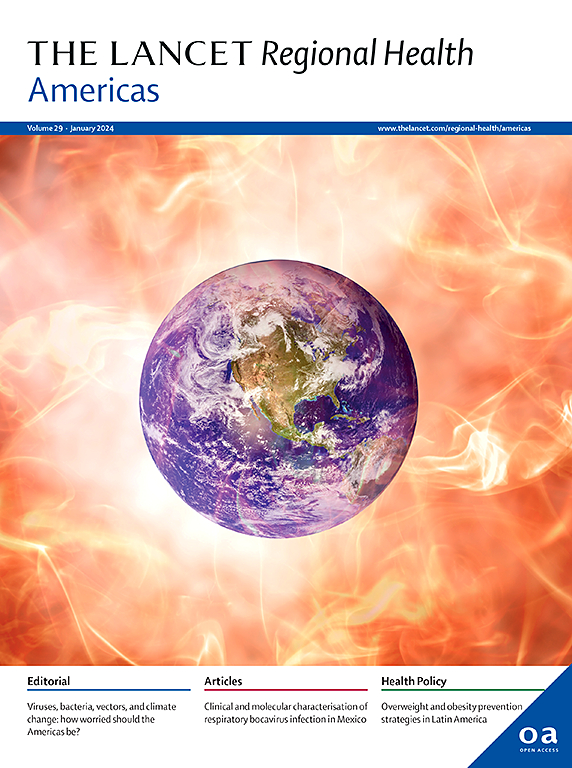Impact of conditional cash transfer programs on health outcomes in Argentina: a retrospective, observational analysis based on MICS 2019/2020
IF 7
Q1 HEALTH CARE SCIENCES & SERVICES
引用次数: 0
Abstract
Background
Conditional cash transfers (CCTs) are widely used to combat intergenerational poverty and to invest in human capital. Argentina introduced its own CCT program AUH (Asignación Universal por Hijo) in 2009. The aim of this research was to assess the relationship between the AUH program and key indicators: healthcare use, nutritional indicators (among children under five years), and high school enrollment.
Methods
We utilized data from the Multiple Indicators Cluster Survey (MICS) conducted in Argentina between late 2019 and early 2020. Specifically, we employed different matching techniques to estimate the relationship between AUH and healthcare utilization and high school enrolment. Additionally, we assessed the program's importance in improving nutrition outcomes among children under five years.
Findings
Our analysis reveals that the AUH program has not significantly increased healthcare utilization among affiliated children. When accounting for program heterogeneity, the impact of the program was found to be consistent across boys and girls, and across children of different ages, although we found evidence of increased healthcare utilization among adolescents. In addition, there was no statistically significant evidence for a link between program affiliation and reduction in stunting and wasting among children under five years. Furthermore, the program has led to increased high school enrolment among boys, consistent with established findings.
Interpretation
The AUH program demonstrates a limited impact, particularly on health and nutrition outcome indicators. Efforts should be made to improve the program by focusing on cash transfer conditionality and amount, as well as strengthening healthcare infrastructure.
Funding
None.
阿根廷有条件现金转移支付方案对健康结果的影响:基于《2019/2020年多指标集》的回顾性观察性分析
有条件现金转移支付(cct)被广泛用于消除代际贫困和投资人力资本。阿根廷于2009年推出了自己的有条件现金援助项目AUH (Asignación Universal poor Hijo)。本研究的目的是评估AUH计划与关键指标之间的关系:医疗保健使用、营养指标(五岁以下儿童)和高中入学率。方法我们利用了2019年底至2020年初在阿根廷进行的多指标类集调查(MICS)的数据。具体而言,我们采用不同的匹配技术来估计AUH与医疗保健利用和高中入学率之间的关系。此外,我们还评估了该项目在改善五岁以下儿童营养状况方面的重要性。结果:分析表明,AUH计划并没有显著提高附属儿童的医疗保健使用率。当考虑到项目的异质性时,我们发现项目的影响在男孩和女孩以及不同年龄的儿童中是一致的,尽管我们发现青少年中医疗保健使用率增加的证据。此外,没有统计上显著的证据表明参与项目与减少五岁以下儿童发育迟缓和消瘦之间存在联系。此外,该项目还提高了男孩的高中入学率,这与已有的研究结果一致。AUH项目的影响有限,尤其是对健康和营养指标的影响。应努力改进该方案,重点关注现金转移的条件和数额,以及加强保健基础设施。
本文章由计算机程序翻译,如有差异,请以英文原文为准。
求助全文
约1分钟内获得全文
求助全文
来源期刊

Lancet Regional Health-Americas
Multiple-
CiteScore
8.00
自引率
0.00%
发文量
0
期刊介绍:
The Lancet Regional Health – Americas, an open-access journal, contributes to The Lancet's global initiative by focusing on health-care quality and access in the Americas. It aims to advance clinical practice and health policy in the region, promoting better health outcomes. The journal publishes high-quality original research advocating change or shedding light on clinical practice and health policy. It welcomes submissions on various regional health topics, including infectious diseases, non-communicable diseases, child and adolescent health, maternal and reproductive health, emergency care, health policy, and health equity.
 求助内容:
求助内容: 应助结果提醒方式:
应助结果提醒方式:


